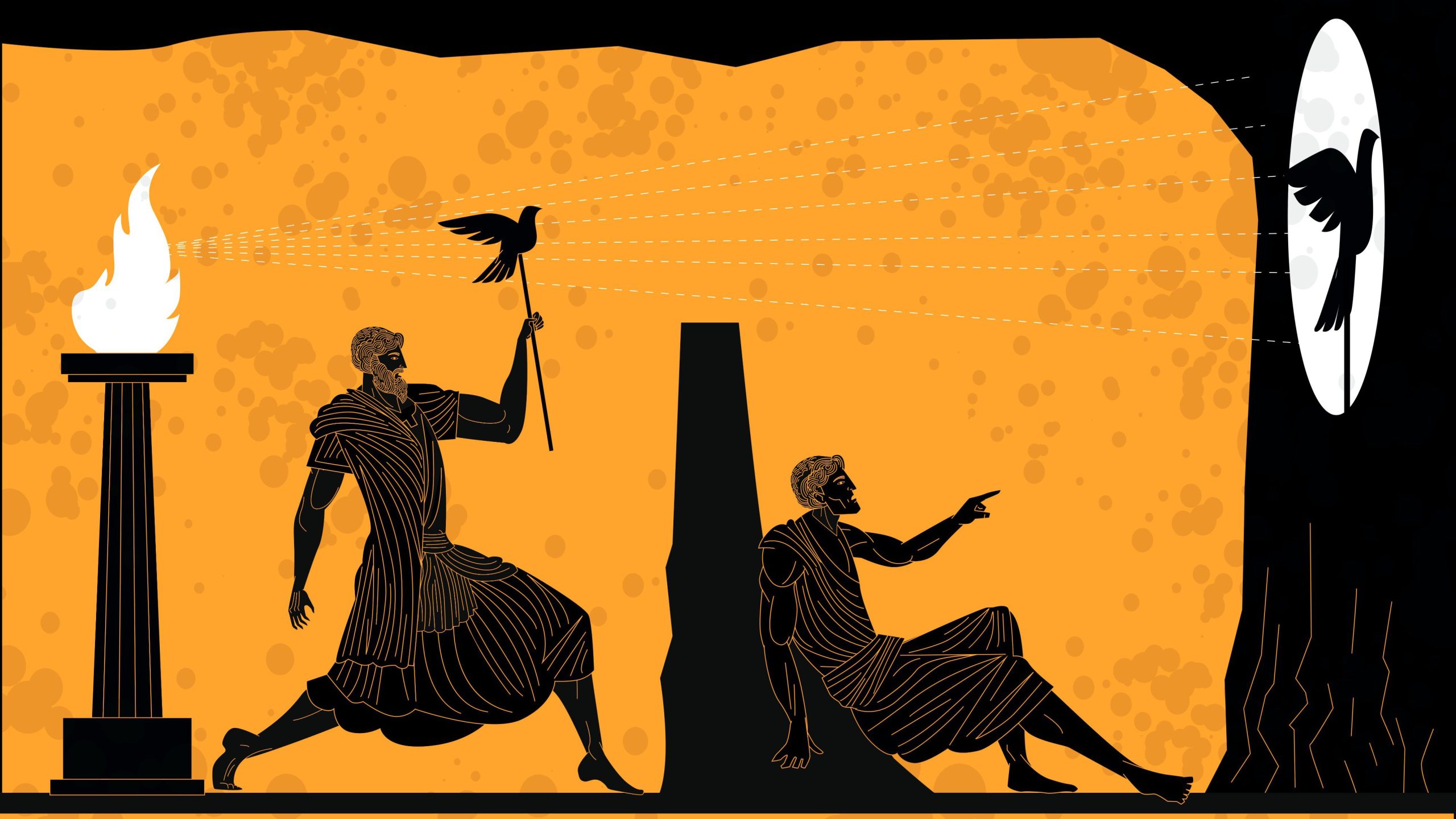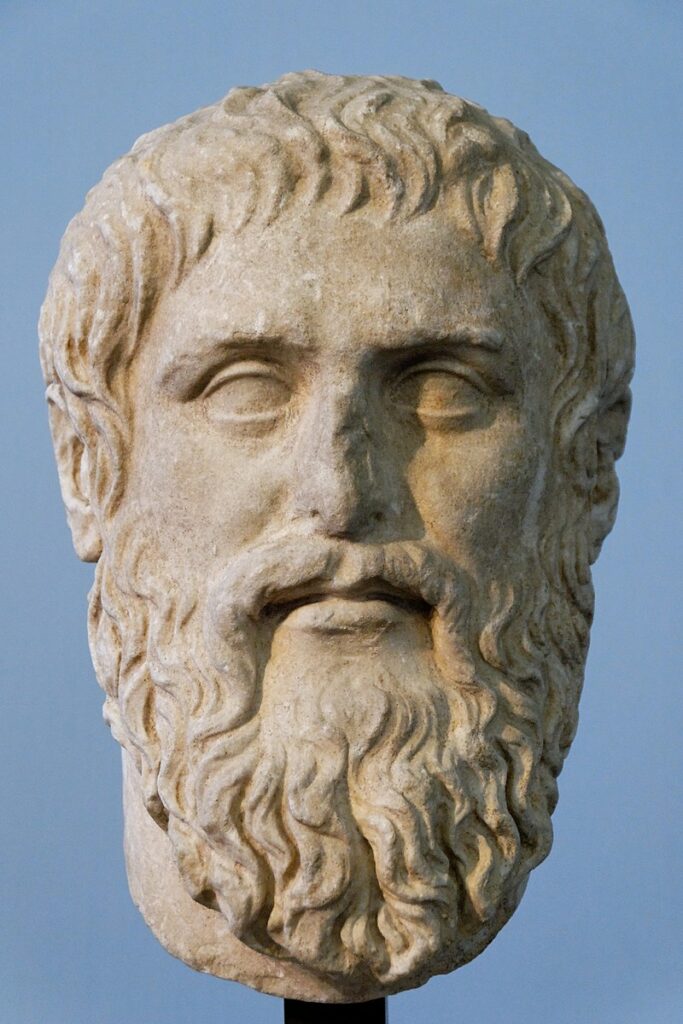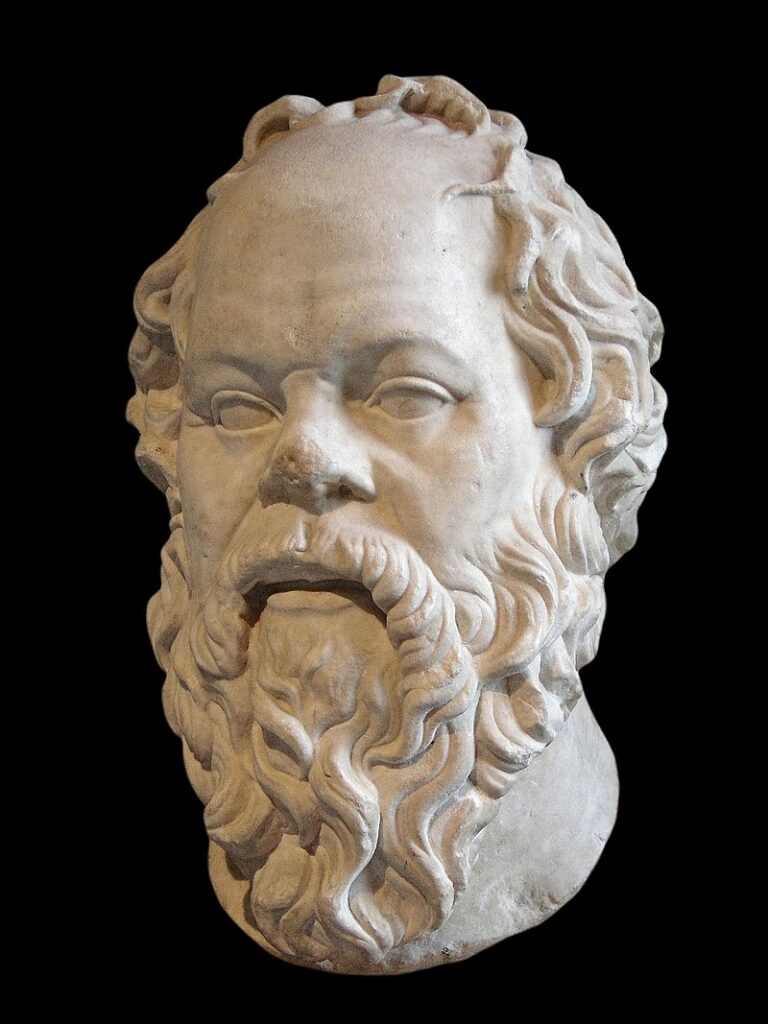
by Ed Whelan, Contributing Writer, Classical Wisdom
The influence of Plato on western philosophy has been immense; some of his key thoughts are encapsulated in the Allegory of the Cave. This presents some of his key philosophical ideas on the nature of truth, reality and even society. It is essential for understanding the Athenian thinker’s concepts which are still as relevant today as they were over two thousand years ago.
Plato’s Metaphysics
To understand Plato’s Allegory, it is first necessary to grasp some of his major ideas. In his masterpiece, the Republic, he outlines his theory of reality. He proposed that there are two worlds. There is the world of the senses that we know, which is always in flux, and unreliable. Then there was a second world; a timeless and unchanging world of eternal ideas or forms. What we call ‘truth’ is knowledge of these forms or ideas, which are the models for all that we perceive in the physical realm. This world of Ideas is the ‘real’ world. According to Plato we can know the Forms by the practice of reasoning and philosophy.

Plato’s Allegory of the Cave
Plato frequently used parables and allegories to communicate his arguments and to make points. The Allegory of the Cave, which appears in the Republic, was written by Plato to develop his ideas on reality and knowledge. It was designed to show the dichotomy between opinion and belief, and the real and the unreal. The story is told in the form of a dialogue between Socrates and Plato’s brother Glaucon.
In the allegory, Plato has Socrates narrate that there were a number of prisoners chained together in a cave for a great period of time. There is a fire behind them, and between the fire and the captives are people carrying objects. The flames cast shadows on the walls before the prisoners who think that they are real. So, the prisoners mistakes shadow-play for reality. One day one of the prisoners’ escapes, and see the fire and realizes that what he understood to be real was only shadows.
He then explores the world outside the cave, and understands the nature of reality for the first time. The prisoner realizes that the other chained prisoners need to know this, and that this would encourage them to escape the cave. On his return to the cave, the prisoner was half-blind because his eyes were not used to the sunlight. None of the prisoners would believe him and now think that he is blind. They refuse to try and leave the cave, and continue to believe that the shadows that they see is reality. In the dialogue, Plato has Socrates state that if the chained prisoners were freed, they would kill their liberators.

The Allegory of the Cave and Reality
Socrates, who is really only speaking the ideas of Plato, explains the allegory to Glaucon. The cave and its shadows are the world of the sense, the fire is the sun, and the external world is the realm of Ideas. Most people are only aware of the shadows and not the real world. This is because they assume knowledge of the senses, and not the forms. Most people live in ignorance as a result. The escape of the prisoner from the darkness to the outside world reflects the rise of the soul from the sensible realm to the that of the Ideas, which is where truth resides. Like the prisoner, those who see the Forms will reject the old view of reality and want to know more about the truth, which can only be known intellectually. The allegory shows the two-fold nature of Plato’s view of reality. It also argues that everyone can know the truth, like the escaped prisoner, and become wise, if they only turn their mind to the Forms. It also shows, however, that enlightenment is challenging, as seen in the escaped prisoner’s problems with the chained men in the cave. This is because the majority are in error, like the chained prisoners, and are hostile to the wise who have seen the real world because they contradict popular beliefs.
The Allegory and Truth
For Plato, only those who know the Forms know the truth and should be leaders. Because of their knowledge, they understand goodness and abhor the immoral. As a result, they have a duty to help their fellows who are still in ignorance. Those who only know the shadows (sensible world) are the majority of people and are ignorant and irrational. Those who have seen the Forms are wise and have knowledge of the goods. Plato believes that the rule of Philosophers is the best form of government. Because most people are ignorant, they are not fit to be involved in politics. This idea has been criticized as undemocratic as it argues that only the few should rule. Many commentators see in the allegory allusions to Socrates and how he was driven to his death by the Athenians. Socrates, like the prisoner who tried to tell the truth and urged people to change but was not believed and attacked instead. Several scholars have interpreted the Allegory as saying that those who know the truth will suffer for it like Socrates, because the minds of the majority are only directed at the unreal.

Conclusion
In the allegory, Plato presents many of his most profound and influential ideas. He used the story to illustrate the two-fold nature of reality, the nature of truth, belief, and opinion. The Athenian philosopher shows that people do not want to know the real and be free. Plato uses his arguments to justify rule by the wise or philosophers. He also demonstrates that enlightenment was hard and that the wise often suffer if they try and help others.
Reference
Plato (2000). The Republic. Harmondsworth: Penguin.
Juge, Carole. “The Road to the Sun They Cannot See: Plato’s Allegory of the Cave, Oblivion, and Guidance in Cormac McCarthy’s ‘The Road’.” The Cormac McCarthy Journal, vol. 7, no. 1, 2009, pp. 16-30